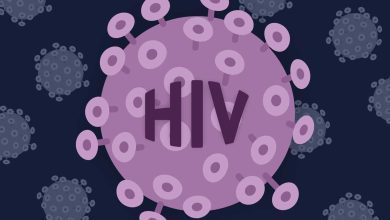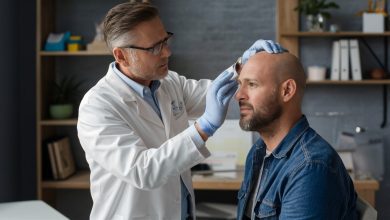Common eye diseases and vision problems

T If you have eye or vision problems, consult an ophthalmologist. “An ophthalmologist is a physician who examines and treats medical and surgical eye conditions,” said Christine Saad, M.D., associate chief of the Department of Ophthalmology and Ophthalmology at LVPG Ophthalmology-Fogelsville. Ophthalmologists specialize in treating eye health problems such as dry eye syndrome, eyelid conditions such as blepharitis and stye, cataracts, diabetic eye disease, glaucoma, or macular degeneration.
In addition to providing high quality and uncompromising sterility, Allied Pharmacy is experienced in ophthalmology compounding.
What can a patient expect from an appointment with an ophthalmologist?
An optometrist will perform a complete eye exam, including a visual acuity assessment, a peripheral vision assessment, an intraocular pressure test, a microscopic assessment of the eye, and a dilated exam to examine the eye and assess the optic nerve and retina. We also do eyeglass appraisals.
What are the signs for an eye doctor visit?
There are some indications that you should see an eye doctor.
You are having vision problems
Intermittent visual disturbances that improve with blinking may be a sign of dry eye.If you have floaters, shadows, or a curtain over your vision, these may be signs of retinal problems, and new or acute symptoms require more urgent evaluation.
You have dry eye
Dry eye is extremely uncomfortable and can get worse over time. This symptom can affect your ability to read and use your computer for long periods of time. In severe cases, chronic dry eye can lead to corneal scarring. To confirm this, the ophthalmologist examines the eye under a slit lamp.
Your eyes are red/red.
Red eyes may not be a sign of anything serious. Some people usually have red eyes. However, redness can be a sign of dryness or inflammation affecting the outside or inside of the eye. A sudden, bright red patch may indicate a ruptured blood vessel and is usually not a problem. No, but it will be a problem if it recurs. However, painful redness requires evaluation by an ophthalmologist. Evaluation includes visual acuity assessment and slit lamp examination and may include extended examination.
You have pain in your eyes.
Eye pain can be a sign of local eye problems such as dry eye, episcleritis, inflammation of the eye wall, or intraocular inflammation called uveitis. Headaches and sinus problems can also cause eye pain. People with eye pain should have an eye exam to rule out an eye disease as the cause of the pain.
You have a headache/eye pressure.
Intraocular pressure must be determined to ensure that glaucoma is not present. Headache/eye pressure is often not a sign of an eye problem, but it can be a neurological or sinus-related problem. Glaucoma is vision-threatening, often accompanied by elevated eye pressure. The condition is usually asymptomatic. There are no symptoms of glaucoma until the disease is advanced and threatens blindness.
Common eye diseases and vision problems
There are hundreds of different eye diseases and visual impairments. Some things are incurable, but there are many things that can be treated. You can contribute to your eye health by following a healthy lifestyle and visiting your eye doctor regularly when your vision changes.
How common are eye diseases and disorders?
More than 3.4 million people over the age of 40 in the United States meet the definition of “legal blindness” (visual acuity of 20/200 or less in the good eye or a visual field of 20 degrees or less) or have corrected vision (Disease Control Visual acuity is 20/40 or less, according to the Prevention Center). Nearly 7% of children under the age of 18 in the United States have been diagnosed with an eye disease or condition. Nearly 3% of children under the age of 18 are blind or partially sighted. Vision loss is one of the top 10 causes of disability in adults 18 and older in the United States and one of the most common disabilities in children.
Fortunately, it’s never too late to take care of your eye health. Regular eye examinations and ophthalmologic examinations lead to early diagnosis. This is the key to correcting or delaying most eye diseases. If your vision problems persist for more than a few days or get worse, be sure to see your eye doctor.
What are the most common eye diseases?
The four most common eye conditions that lead to blindness or blindness are:
- Cataract
- Diabetes-related retinopathy
- Glaucoma
- Age-related macular degeneration
However, there are hundreds of different eye diseases and conditions.
What is macular degeneration?
Macular degeneration (also known as age-related macular degeneration or AMD) is an eye condition that affects central vision. It damages the macula, the central part of the retina, allowing you to see fine details. It is the leading cause of blindness in people over the age of 60.
Macular degeneration can be either wet or dry. Wet AMD occurs when abnormal blood vessels grow under the macula and leak blood or fluid. This damages the macula and leads to loss of central vision. Dry AMD leads to a thinning of the macula, blurring central vision over time. Dry AMD is more common than wet AMD, accounting for 70% to 90% of cases.
Symptoms of AMD that are usually not noticed until the disease is advanced include:
- Blurred central vision
- A black or dark spot in the central portion of the visual field
- A wavy or curved appearance to a straight line
There is no cure, but treatment can slow the progression of the disease and prevent severe blindness.
Different Types of eye Diseases
There are hundreds of different eye diseases and visual impairments. Some things are incurable, but there are many things that can be treated.
What is Cataract?
A cataract is a cloudiness of the lens of the eye. This cloudy lens can occur in one or both eyes. tCataracts are the leading cause of blindness worldwide. Cataracts are the leading cause of reversible vision loss in the United States. Cataracts can occur at any age and may be present at birth, but are more common in people over the age of 50.
Symptoms of cataracts include:
- Cloudy/blurred vision.
- Dazzle around the lights at night.
- Poor visibility at night.
- Sensitivity to bright light. Requires bright light to read.
- It changes the way you see colors.
- Frequent replacement of prescription eyeglasses.
Surgery to remove the cloudy lens and replace it with an artificial lens has been very successful, and he sees well in over 90% of people after cataract removal.
What is diabetic retinopathy?
Diabetic retinopathy is a common complication of diabetes. It is the leading cause of blindness in adults in the United States.. The retina is the light-sensitive tissue in the eye that is necessary for sharp vision. In most people with diabetes-related retinopathy, vision does not change until the disease becomes severe. For others, symptoms come and go.
Symptoms include:
- Blurred or distorted vision.
- Seeing new colorblindness or faded colors.
- Bad night vision.
- Small black spots or streaks appear in vision.
We have trouble reading and seeing things that are far away. Treatment includes injections of certain types of drugs and surgery to repair or constrict blood vessels in the retina.
What is glaucoma?
Glaucoma is an eye disease caused by excessive fluid pressure in the eye. Pressure damages the optic nerve and affects how visual information is transmitted to the brain. If glaucoma is not detected and treated, it can lead to blindness or blindness in one or both eyes. Glaucoma is often familial. There are two main types of glaucoma. . Angle-closure glaucoma may appear suddenly. It is painful and very quickly leads to vision loss.
Symptoms include
- Eye pain or pressure.
- Red eyes.
- A rainbow halo around the light.
Visual impairment, blurred vision, constricted vision, blind spots. Treatment focuses on lowering eye pressure and includes prescription eye drops, laser treatments, and surgery.
What is retinal detachment?
A retinal detachment is the separation or detachment of the retina from the underlying tissue that holds it in the eye. This is a serious eye disease that can lead to blindness if left untreated. Depending on the severity of the peel, there may or may not be symptoms.
Symptoms include:
- See flashes of light.
- Check out the dark spots and wavy lines that float across the field of view.
- Obscure/obscure part of the field of view or side view.
Treatments include laser therapy and various surgical approaches to seal or close the retinal tear and reattach the retina.






